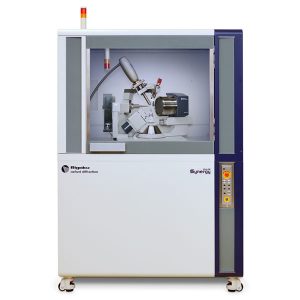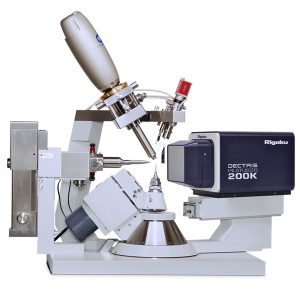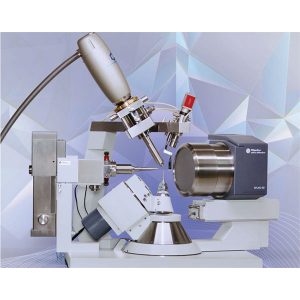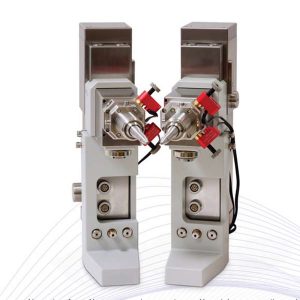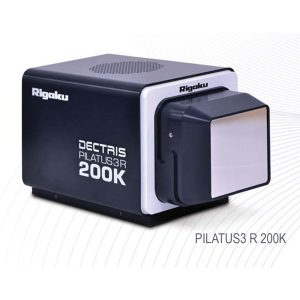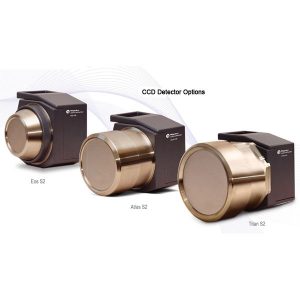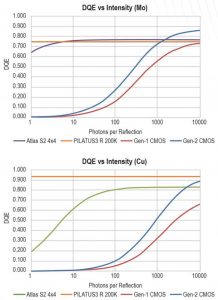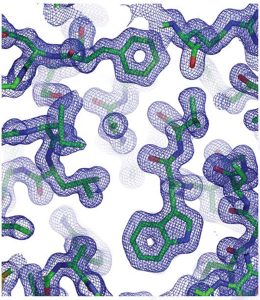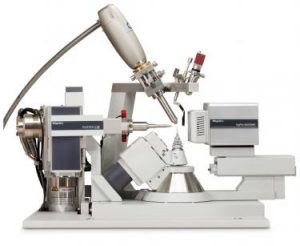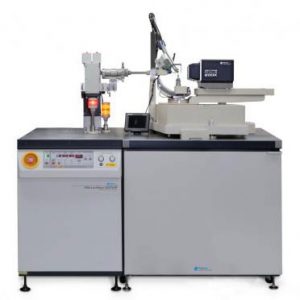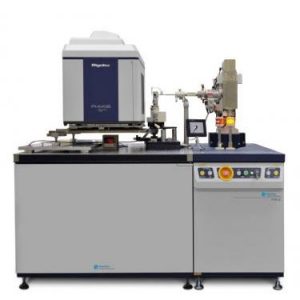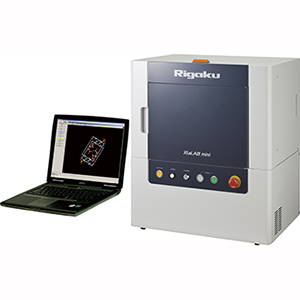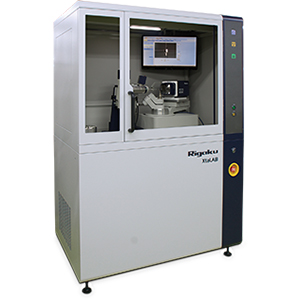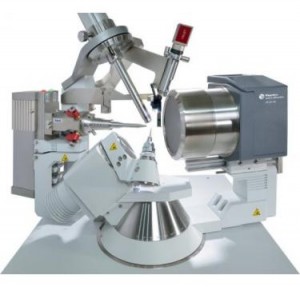XtaLAB Synergy-S Fast, Precise, Intelligent Single Crystal Diffraction System
The XtaLAB Synergy-S from Rigaku Oxford Diffraction is an excellent solution for single crystal diffraction experiments and resolving single crystal structures. It brings together leading edge components and user-inspired software culminating in a highly parallelised architecture that results in fast, precise data generation enabling you to determine the structure of novel chemical compounds.
Key Features
- User inspired CrysAlis software that is intimately integrated into new goniometer features and is highly parallelised for speed and throughput
- What is this? function for rapid determination of small molecule structure
- The latest 3rd generation microfocus X-ray sources that feature higher flux, longer life, higher performance optics and improved alignment mechanism
- Single or dual wavelength optics (Cu, Mo or Ag) with 3 year tube warranty
- Wide range of detector options including Hybrid Photon Counting (HPC) and CCD
- True shutterless operation when used with a HPC detector
- New goniometer with faster motors, new telescoping 2? arm and ±2? accessibility for more efficient data collection
- Electronically controlled lighting of cabinet and crystal
- Ergonomically designed cabinet conforms to the most stringent regulations while offering excellent access to experimental workspace
X-Ray Source
The Synergy utilises the latest the new PhotonJet-S series of microfocus sources. These 3rd generation sources include a host of features that will benefit your research. They provide maximum X-ray photons at the sample thanks to a new optics design, longer life tube and improved alignment system.
PhotonJet-S X-ray sources are available in Cu, Mo or Ag wavelengths in single or dual source configurations.
Goniometer Design
A completely redesigned all new kappa goniometer allows you the ultimate flexibility for your diffraction experiments. With faster motor speeds and a unique telescopic two-theta arm you are free to devise experiments to specifically suit your samples.
The goniometer is compatible with the widest range of detectors including HPC and CCD to suit your requirements and budgets.
With a faster goniometer and the ability to have the detector much closer to the sample, you can design and optimise your diffraction experiments to according to needs and collect higher quality more quickly.
Detectors
The Rigaku Oxford Diffraction Synergy-S is compatible with both Hybrid Photon Counting (HPC) and CCD detectors.
Hybrid Photon Counting (HPC) Detectors
HPC detectors (also known as Hybrid Pixel Array Detectors (HPAD)) are a type of hybrid detector as they contain both a silicon sensor and silicon electronics connected at each pixel by a bump bond. They have revolutionised data collection at beamlines through their high speed, high dynamic range and low noise. This latest generation technology is now available for you to use with homelab generators.
HPC detectors are also direct detection devices as they instantaneously convert each photon into electric charge in the sold state sensor. As such they do not generate any noise unlike other technologies. Each photon is counted and stored providing an accurate picture of the event you are monitoring.
A distinct advantage of this type of detector is that they are event driven. With no noise generation, they are especially suited to measuring weak reflections. Furthermore, they can also be used for true shutterless data collection due to their inherent fast read time and high dynamic range.
CCD Detectors
Rigaku Oxford Diffraction offer CCD detectors with variety of aperture sizes to suit your particular requirements. The line-up includes the extra-high sensitivity Eos S2 and the Titan S2 that boasts the largest active area monolithic detector on the market.
These detectors offer high sensitivity and excellent speed over a wide range of X-ray energies.
Instant binning control and software-controlled self-optimising sensitivity enable these detectors to collect data with a high dynamic range. S2 series detectors combine two images with different sensitivity settings automatically combined to give an effective dynamic range of 1:8,000,000.
Compared to CMOS Detectors
Both HPC and CCD detectors offer distinct performance benefits compared to CMOS detectors. CMOS detectors are also known as Charge-Integrating Pixel Array Detectors (CPADs), which are a type of integrating detector.
At weak reflections, CMOS detectors produce high intrinsic noise and generate a much lower DQE compared to both CCD and HPC detectors. This is the intensity range that is typically of interest for most diffraction experiments.
HPC detectors generate data with high DQE even at weak reflections thanks to their high gain. In comparison, the DQE of CCD detectors drops off at 10 photons or less, but is still significantly better than CMOS detectors which fall away rapidly for measurements involving <1% of the maximum intensity. This rapid drop in performance is due to the higher noise generated by the CMOS detector. Both read noise and dark current noise contribute to the overall noise.
Fast SAD Phasing Case Study
The XtaLAB Synergy combines high accuracy and DQE for measuring the weak anomalous signal from S atoms in proteins. This case study demonstrates the Synergys fast SAD phasing for a low redundancy lysozyme data set.
Details for integration and scaling
| Space Group | P43212 |
| Unit Cell | 77.46Å, 77.46Å, 38.01Å 90°, 90°, 90° |
| Total # Reflections | 110,989 |
| # Unique Reflections | 13.669 |
| Completeness (%) (Friedel pairs unmerged) | 84.6 (11.5) |
| Redundancy (Friedel pairs unmerged) | 4.5 (1.1) |
| 34.1 (1.95) | |
| Rfac/Rmeas (%) (Friedel pairs unmerged) | 2.5 / 2.8 |
| Chi2 (Friedel pairs unmerged) | 1.28 (0.92) |
Note: Values in ( ) are for the last resolution shell.
A data set containing 690 images to 1.6 Å using exposure times of 10sec/0.3° on a PILATUS 3 R 200K detector was collected. Statistics form the data set was processed using XDS indicated the redundancy of 4.5 overall and 1.1 in the highest resolution shell.
The structure was solved using S-SAD phasing methods. The data was initially analysed with SHELXC to check the anomalous signal. SHELXD was then used to find the heavy atom (S) sites. The anomalous sites were used in phasing with SHELXE and MLPHARE, followed by density modification with DM. The Figure of Merit after density modification was 0.79.
Details for structure solution and refinement
| Resolution for Heavy Atoms Search | 1.8Å |
| Corr. Coeff. for Heavy Atoms Solution (all data/weak data) # Heavy Atom Sites Selected from Solution | 33.4 / 18.3 10 out of 10 |
| Resolution Used for Phasing and Density Modification | 1.6Å |
| FOM after Density Modification | 0.79 |
| # Residues built/# Waters Added | 120 (93%) / 125 |
| Rfac/Rfree (%) after REFMAC Refinement | 17.5% / 22.5% |
ARP/wARP ws subsequently used to autobuild 93% of residues. The structure was then refined with REFMAC to a final Rfac and Rfree of 17.5%and 22.5% respectively.

